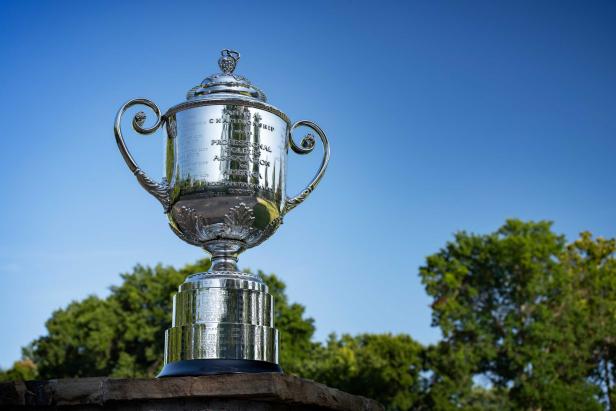The 2024 PGA Championship is underway, and one of the key goals for players is to make the cut to advance to the weekend rounds. This article delves into the importance of not focusing solely on making the cut, as it can lead to a negative mindset that impacts performance. The ultimate goal is to post strong scores early to secure a spot in the next rounds without having to worry about cutline scenarios.
At Valhalla Golf Club, conditions for the second round are expected to be challenging, with rain and thunderstorms in the forecast. This can lead to higher scores and potential volatility in the cutline as the day progresses. The tournament’s guidelines state that after the first 36 holes, the field of 156 players will be reduced to the low 70 scores and ties, who will then advance to complete the final two rounds.
Datagolf.com is projecting a cutline at one-under 141, which provides insight into where players need to be to secure a spot for the weekend. Players like Tiger Woods, a four-time PGA winner, will be closely monitoring the cutline as they aim to advance. The article also discusses the impact of external factors such as a traffic accident and potential weather delays on the completion of the second round.
The article highlights the PGA of America’s cut rule, which is similar to that of the Open Championship, with the low 70 scores and ties advancing. Historical data on past PGA Championships illustrates how the cutline has varied over the years, providing context for the current projections. The article also delves into the tournament’s history and the evolution of the cut format since its inception.
The article concludes with a focus on notable players who have made the most cuts in PGA Championship history, with Raymond Floyd, Jack Nicklaus, and Phil Mickelson leading the list. Mickelson, who has the opportunity to surpass Floyd and Nicklaus in cut appearances, will need to improve his performance in the second round. Additionally, the article discusses the participation of club professionals in the tournament and their chances of making the cut, highlighting past instances of club pros advancing to the weekend rounds.
Overall, this article provides a comprehensive overview of the significance of making the cut at the PGA Championship and the various factors that players must consider to secure a spot in the final rounds. With insights into player performance, historical data, and tournament rules, readers gain a deeper understanding of the cutline process and its implications for the participants.


